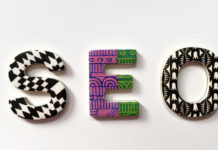Where your clients are located may not seem all that significant, but you can learn a lot about your business by understanding your customer’s geographic data.
Identifying client locations on a map is called customer mapping. It requires that you upload your customer location data to a mapping program, which will then plot the data points on a map.
Customer mapping gives you a visual representation of your client data so you can quickly see where your customers are located. Performing this exercise will tell you several important things about your business:
● The density of your clients in particular areas
● Areas where you can expand your business
● Regions where your offerings might underserve your clients
● The needs of your clients
● The best routes for your salespeople or delivery service
To gain these insights will require that you use mapping analytic tools. Let’s explore what these tools are and how you can use them to gain information to help your business.
Heatmap
A heatmap generator is an analytics tool that will show you how densely your customers populate a particular area. Your customers are represented as data points on a map, and the heatmap represents the density of this data through color-coded circles.
As the data density increases in a particular area, the heatmap will show color to indicate this higher intensity. This will show you areas where your client base is saturated and areas where there is an opportunity for expansion.
Radius Map Tool
A radius map tool allows you to determine distances by drawing a radius circle in miles or kilometers from any location or cluster of locations on your map.
This will show you how many customers are within a certain radius and how much of the market is untapped within a certain radius. With this tool, you can also run a proximity analysis on a segment of your customer location data.
A proximity analysis will tell you how far one customer is from another. As a result, you can make strategic decisions about how to deploy resources to serve these customers. For example, if you notice that one cluster of customers is far from a service location, you may want to put a building closer to them for their convenience.
Drive-Time Tool
Every business needs to cater to its client’s needs. Whether it’s a product or service, it has to solve some sort of problem for the customer.
Furthermore, marketing efforts need to reach clients where they are. If you use customer mapping, you can see where your customers are located and where they are in proximity to things like business hubs and commercial districts.
Using a drive-time tool, you can tell how far your clients will likely have to travel to get to work and/or shopping. This will tell you whether your customers generally spend a lot of time in the car.
Subsequently, you may want to place advertisements where people who spend a lot of time driving are likely to encounter them, such as on the radio or on roadside billboards.
Additionally, the distance they have to travel to work and to commercial districts tells you about their needs. In this way, you can direct your marketing and sales campaigns towards solving the problems this situation causes people.
Route Optimization Tool
Whether you’re arranging a schedule for your salespeople or setting up deliveries or service calls, it’s essential to know the best route to take.
Using a route optimization tool on your customer map will provide you with the most efficient route between multiple locations. This can tell you how much of a gas stipend you need to budget for, how long you can expect your employees to be away from the office, and how much time a client may have to wait for a delivery or servicing.
Summary
Customer mapping is the process of representing your customer location information on a map. When you apply analytics tools to your customer map, you learn important information about your business.
The analytics tools most useful to this process are a heatmap generator, a radius tool, a drive-time tool, and a route optimization tool. When applied to your customer map, each of these tools reveals information about your client locations that you can use to improve your business.




































